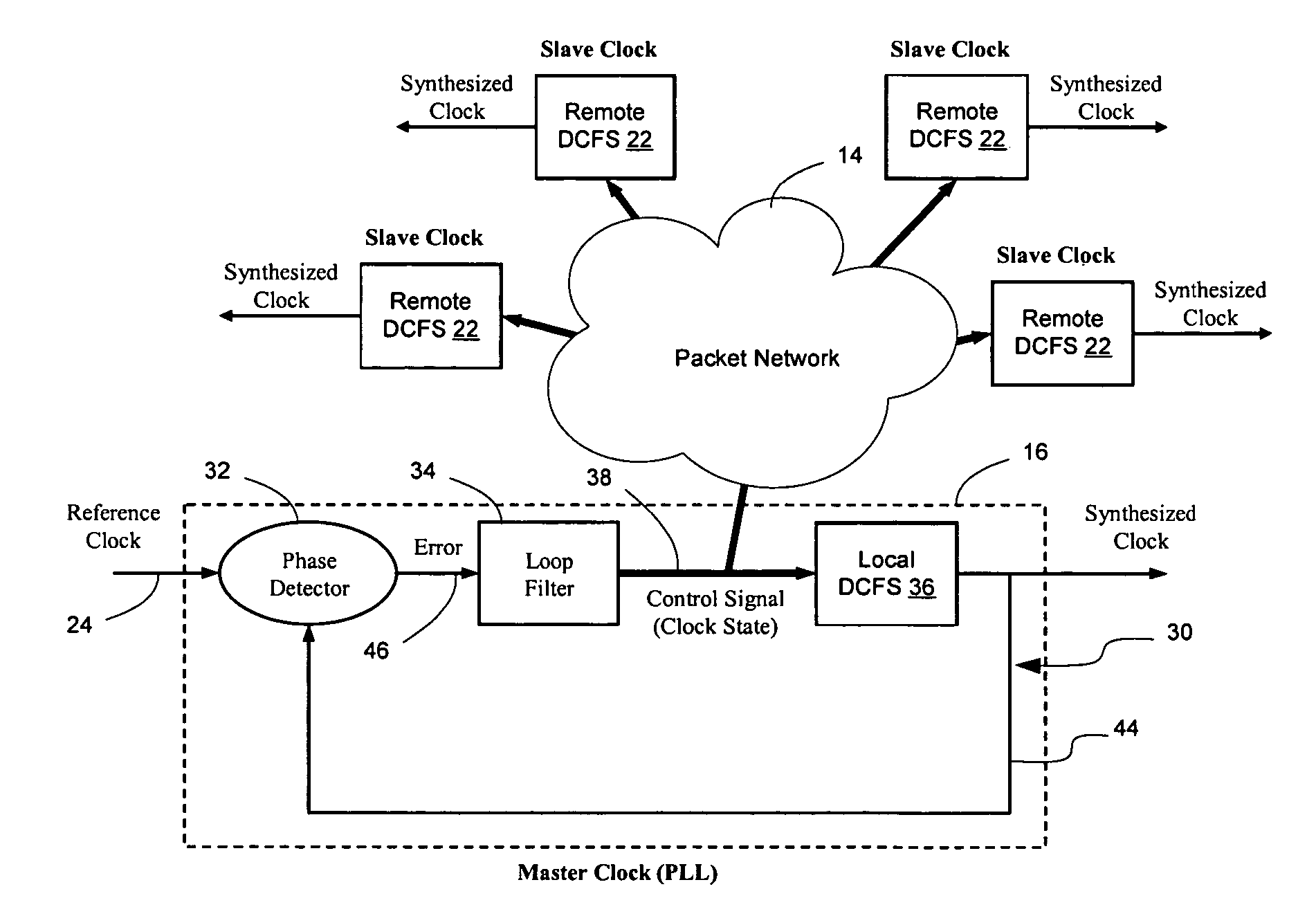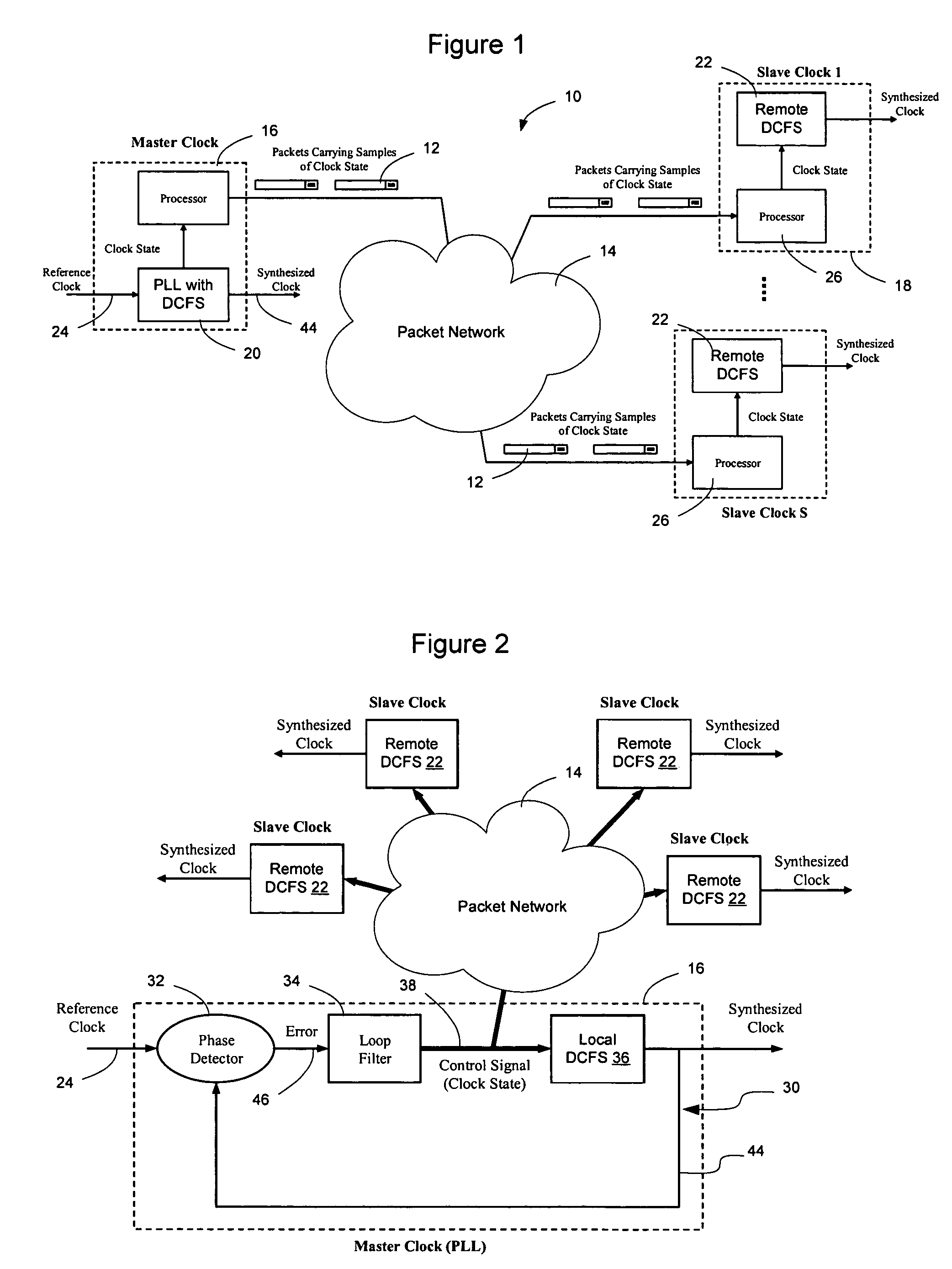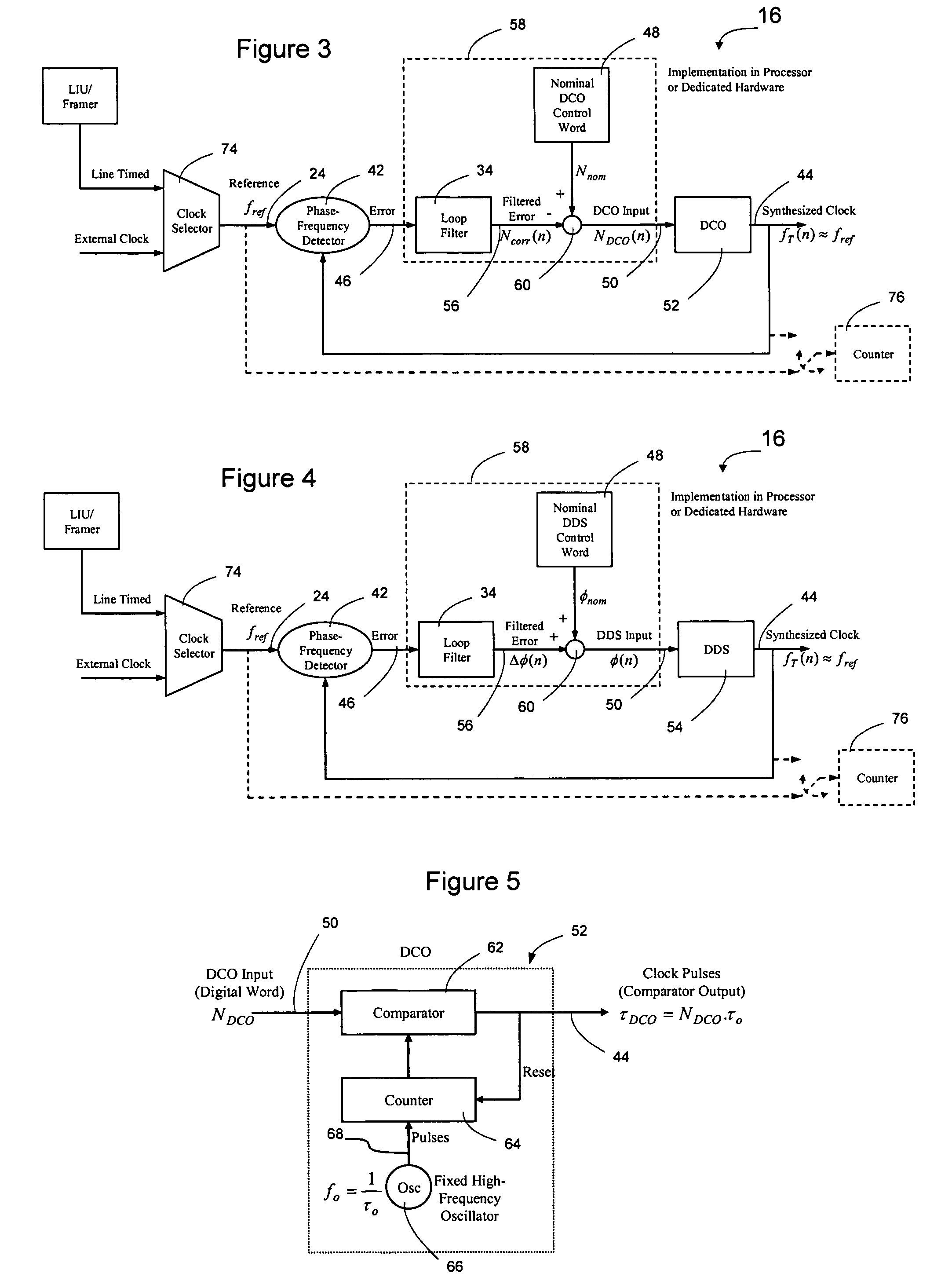Method and apparatus for synchronizing clock timing between network elements
a technology of network elements and clock timing, applied in multiplex communication, generating/distributing signals, instruments, etc., can solve problems such as difficult synchronization of different tdm networks and network elements on these tdm networks, period line errors, and increased jitter and delay in transmission
- Summary
- Abstract
- Description
- Claims
- Application Information
AI Technical Summary
Benefits of technology
Problems solved by technology
Method used
Image
Examples
Embodiment Construction
[0040]The following detailed description sets forth numerous specific details to provide a thorough understanding of the invention. However, those skilled in the art will appreciate that the invention may be practiced without these specific details. In other instances, well-known methods, procedures, components, protocols, algorithms, and circuits have not been described in detail so as not to obscure the invention.
First Level Control—Exchange of Control Words
[0041]FIG. 1 illustrates an example network 10 in which clock information 12 is carried across a packet network 14 from a master clock 16 to one or more slave clocks 18. As shown in FIG. 1, synchronization of the master and slave clocks is achieved over a packet (non TDM) portion of the network 10 by transmitting packets 12 containing clock state information from the master clock 16 to the slave clocks 18. The master clock 16, according to embodiments of the invention, includes an all digital phase locked loop including a Digit...
PUM
 Login to View More
Login to View More Abstract
Description
Claims
Application Information
 Login to View More
Login to View More - R&D
- Intellectual Property
- Life Sciences
- Materials
- Tech Scout
- Unparalleled Data Quality
- Higher Quality Content
- 60% Fewer Hallucinations
Browse by: Latest US Patents, China's latest patents, Technical Efficacy Thesaurus, Application Domain, Technology Topic, Popular Technical Reports.
© 2025 PatSnap. All rights reserved.Legal|Privacy policy|Modern Slavery Act Transparency Statement|Sitemap|About US| Contact US: help@patsnap.com



